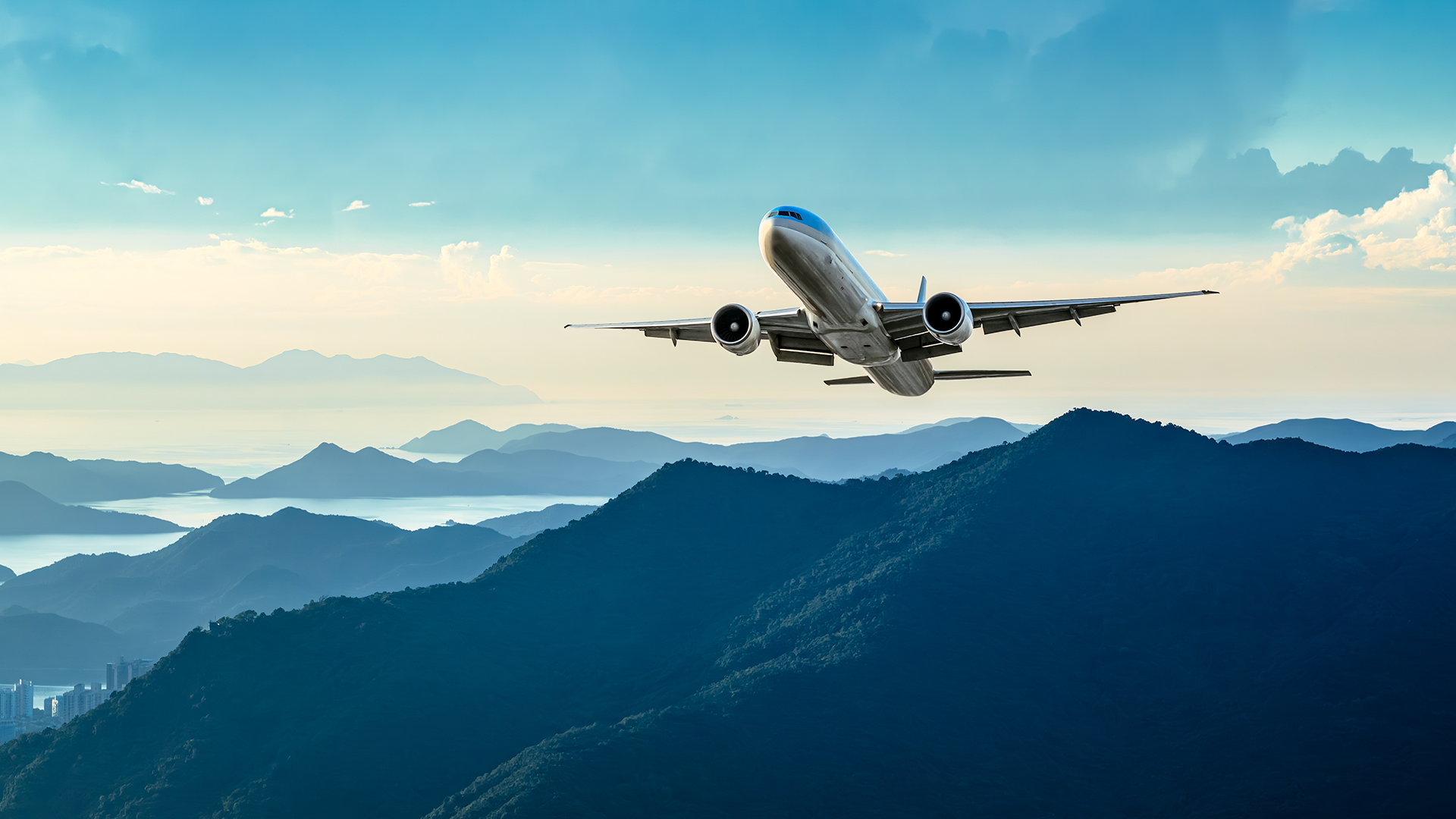
Airlines have made significant commercial progress since the pandemic, yet many still struggle with profitability. Standard Chartered explore the role of treasury in bringing this vital sector up to speed.
Pre-flight briefing: the profitability challenge
The airline industry is on track to exceed $1tr. in global revenues this year, demonstrating a robust recovery following the pandemic. Yet profitability remains challenging, constrained by escalating fuel costs, persistent inflation, and operational inefficiencies.
While advancements in personalisation of services, digital booking and smarter loyalty programmes bolster growth, treasury operations are emerging as the linchpin for financial stability. For treasury professionals, the opportunities are clear: optimise liquidity and cash buffer, reduce transaction costs, and align with revenue strategies to fortify airlines against a volatile market.
How can this be done? Centralised treasury models, payment innovations, sustainable practices, and integrated retail approaches can each play a role in transforming financial performance.
Flight command: centralising cash flow
Airlines generate substantial daily cash inflows from ticket sales, ancillary fees, and inflight transactions, yet fragmented management across multiple accounts, currencies, and markets often undermines liquidity. Decentralised treasury structures – subject to local banking challenges, currency controls and fluctuations – create visibility gaps, idle balances, and hamper effective deployment of surplus cash. Centralising treasury operations consolidates these pools, reducing operational complexity and minimising the need for costly short-term borrowing.
A key enabler of this transformation is the rationalisation of banking relationships and account structures. Airlines often maintain multiple banking relationships across markets, leading to numerous accounts and operational overheads. By reducing the number of physical accounts, airlines can improve cash visibility and reduce the administrative burden. Virtual accounts can be pivotal here – not only does it help speed up reconciliation by identifying payers associated to a unique virtual account number, but it also enables treasurers to monitor and allocate funds without establishing physical accounts in every market. This results in streamlined operations and enhanced liquidity management.
FX management presents another critical opportunity, particularly in fuel cost optimisation. Aviation fuel, priced in USD, is one of the largest operating expense for airlines. However, revenue collected is often in multiple currencies, exposing airlines to FX volatility. By leveraging centralised cash management and technologies such as AI, airlines can forecast cash flow and currency mismatches more accurately and implement proactive hedging strategies to stabilise costs. Furthermore, solutions such as SC PrismFX offer a way to automate FX flows through a centralised payment process, which expands the currency outreach, increases the efficiency in reaching beneficiaries, and optimises cash balances, leading to simplification and overall cost savings.
Jetstream journeys: modernising payments
Airlines process millions of transactions daily, yet legacy payment systems exact a steep toll. Value-based transaction fees, often reaching 2-3% per ticket, erode margins, while settlement delays, sometimes spanning days, strain cash flow. Innovative solutions are now reshaping this landscape.
IATA Pay, developed in collaboration with Standard Chartered across select markets such as Vietnam and India, leverage on instant payments like VietQR and Unified Payments Interface (UPI) respectively to facilitate e-commerce sales with near instant, low-cost transactions.
By eliminating the need to pay acquiring fees to card acquirers, participating airlines are able to generate significant savings on payment processing fees of up to 99%. Airlines are also adopting alternative payment options such as Net Banking and RtP, integrating these – alongside IATA Pay – into one-stop collection gateways such as Standard Chartered’s Straight2Bank Pay. This platform supports real-time A2A payments, QR code payments and e-wallet transactions, accelerating settlement and reducing reliance on traditional card networks for greater payment resilience and cost efficiency.
Blockchain technology offers another avenue through which to enhance efficiency and improve resilience, particularly for cross-border payments. By eliminating intermediaries, it enables real-time transfers with minimal fees, a boon for airlines navigating multiple jurisdictions. Partior, a blockchain-based payment network is designed to enable instant, 24/7 cross-border settlements in multiple currencies. Already supporting real-time settlement in USD, EUR, and SGD, the platform can help airlines minimise FX losses from exchange fluctuations and cut intermediary bank fees, significantly improving financial efficiency.
Case Study: Thai Airways’ treasury transformation
During the pandemic, Thai Airways faced financial strain exacerbated by its decentralised treasury structure. Cash management was fragmented across multiple countries, requiring significant manual intervention for forecasting and reconciliation.
In highly regulated markets such as India, Pakistan, and Bangladesh, Thai Airways had reduced the number of staff at representative offices, relying on general sales agents (GSAs) to handle local operations and documentation. This set-up obscured visibility into its global cash position and hindered repatriation of surplus funds to headquarters. Multiple banking relationships, each with different contact points and inconsistent market support, further complicated operations.
Recognising the need for change, Thai Airways partnered with Standard Chartered globally to support the implementation of a centralised treasury model across 14 countries. The solution included cash collections and payments in-country, centralised host-to-host (H2H) connectivity, a global interest optimisation structure, and virtual accounts. Discussions around SC PrismFX, IATA Pay and Partior for modernising payments are ongoing, with Thai Airways deploying a single payment hub, standardising processes and leveraging digital transactions wherever possible.
The airline also deployed virtual accounts, segregating funds for ticket sales, ancillaries, and other purposes. This provided real-time visibility and enabled centralised control. Enhanced authorisation capabilities enabled customised workflows and restricted access, ensuring confidentiality and robust cash flow management. Initially, resistance from teams accustomed to legacy systems posed a challenge, but Standard Chartered and Thai Airways collaborated on feasibility studies and training sessions to demonstrate the benefits. A dedicated service team from Standard Chartered acted as a single contact point, streamlining onboarding and regulatory documentation.
The result: Thai Airways achieved complete cash visibility, reduced costs, optimised liquidity, and positioned itself for greater resilience and profitability in the future.
Green wings: investing in more sustainable outcomes
Aviation can play a critical role in the energy transition if it embraces the opportunity to pursue greater sustainability as a sector. Whether it is investment related to more fuel-efficient aircraft, sustainable aviation Fuel (SAF), or carbon offsets, the industry is faced with a number of new options to consider. SAF, derived from renewable sources, offers a lower-carbon alternative to traditional jet fuel, helping airlines meet regulatory mandates and consumer demand for greener travel. However, its higher production costs and limited supply mean that innovative financial strategies can help to make adoption viable.
Partnerships such as Standard Chartered and DHL Express’ SAF initiative, British Airways’ involvement in financing for carbon-removal projects or Malaysia Airport’s sustainable Islamic supplier financing, highlight how innovative solutions can support more sustainable and cost-stable aviation strategies.
By integrating sustainability considerations into treasury planning, airlines can better leverage centralised pools to fund bulk purchases or secure long-term supply agreements, mitigating price volatility.
Clearer skies: linking treasury to retail
Treasury optimisation extends well beyond cost management. It can also amplify revenue through ancillary offerings and innovative business models. Ancillary services such as seat upgrades, lounge access, baggage fees, and in-flight dining – bundled with ticket purchases – drive per-passenger yields. McKinsey estimates these retailing innovations could generate $45bn industry-wide by 2030.
Airlines are also increasingly adopting marketplace models, expanding into digital platforms that aggregate travel-related services to deliver personalised, seamless offerings, boosting ancillary revenue and deepening engagement. For example, AirAsia’s super app integrates flights with hotel bookings, ride-hailing, and food delivery, while others explore in-flight marketplaces for duty-free shopping or entertainment upgrades. These efforts can account for up to 20-30% of total earnings, redefining airlines as one-stop travel hubs rather than solely transportation providers.
Real-time payment systems are critical to this shift, ensuring swift revenue capture from ancillaries and marketplace sales. Innovations such as Standard Chartered’s Payout-as-a-Service (PaaS) automate complex transactions – such as split payments to hotel partners or scheduled disbursements for in-flight sales – reducing costs and enhancing cash flow. AI complements these solutions by analysing demand patterns and customer preferences to dynamically adjust fares and ancillary offers, such as premium seats priced higher during peak seasons or discounted hotel bundles to clear inventory.
Treasury professionals are increasingly playing a strategic role here, collaborating with commercial teams to align liquidity with these growth opportunities. Marketplace models may require upfront investments in platforms or partnerships, demanding flexible cash reserves. By linking financial and retail strategies, airlines turn ancillary revenue into a competitive edge, strengthening resilience and profitability.
Final approach: landing financial success
The tools to achieve more sustainable profitability already exist. Centralised treasury management boosts cash visibility, liquidity, and decision-making, while cutting borrowing costs. Payment innovations such as IATA Pay and Partior streamline transactions, reduce costs, and accelerate cash cycles. Sustainability, woven into treasury strategies through investments such as SAF, can help balance profitability with the pursuit of environmental goals. Meanwhile, maturing retail strategies and marketplace models unlock new revenue streams and deepen passenger engagement.
For treasury and finance leaders, the blueprint forward is clear: leverage these innovations now to drive sustainable profitability into tomorrow. Airlines that act decisively today won’t just keep pace; they’ll lead the industry to stronger margins and long-term success as aviation soars to new heights.




